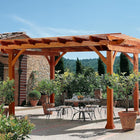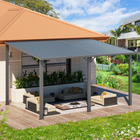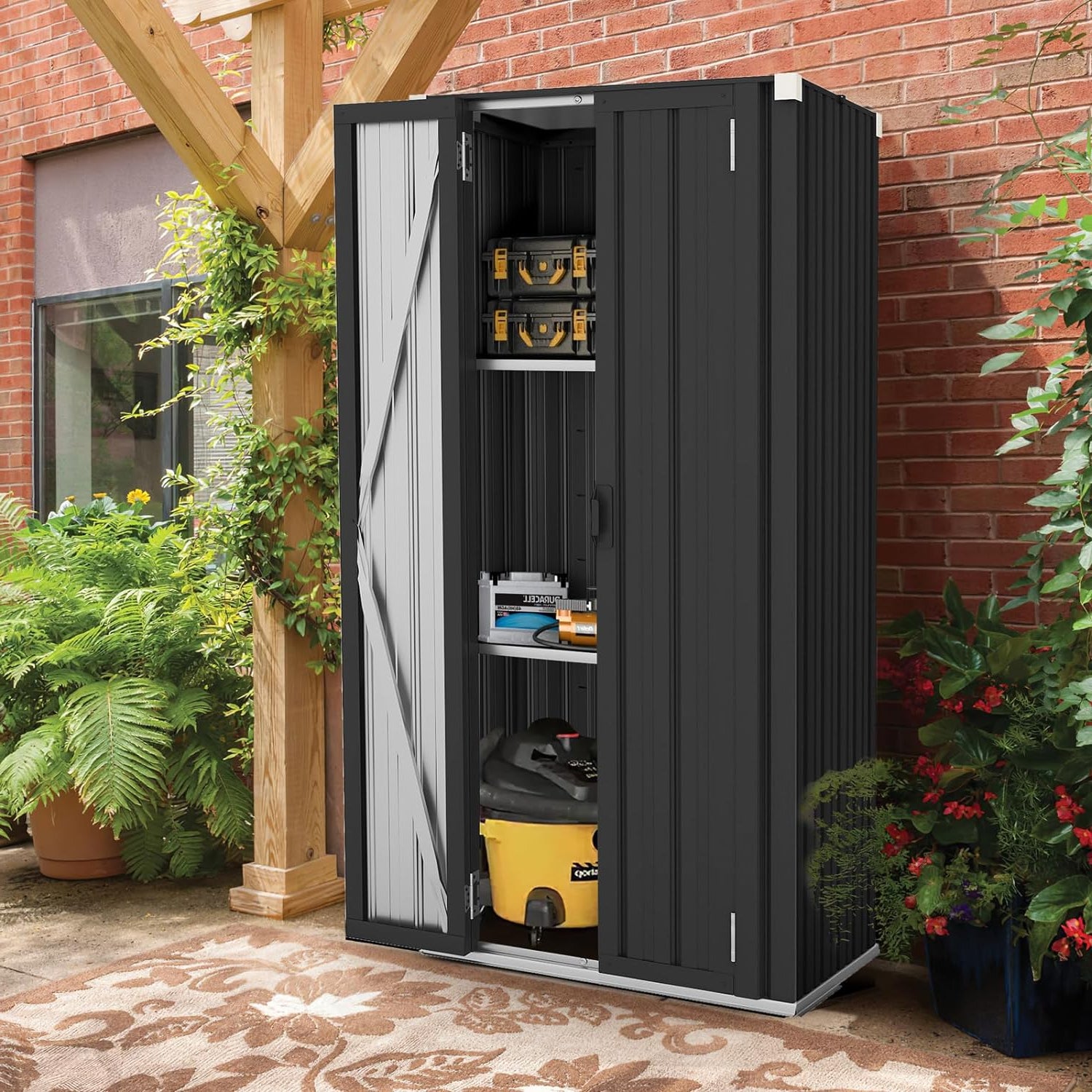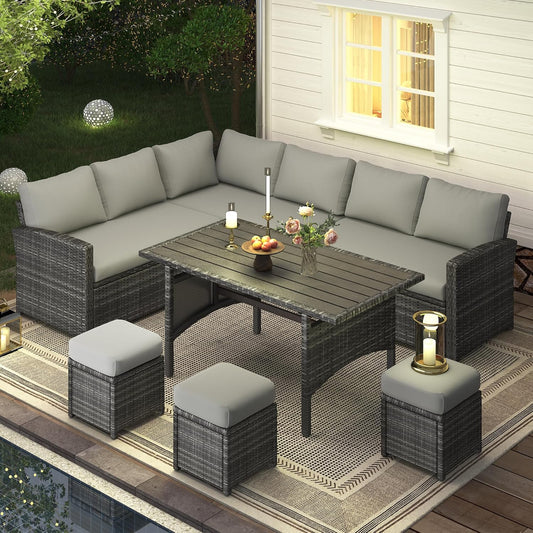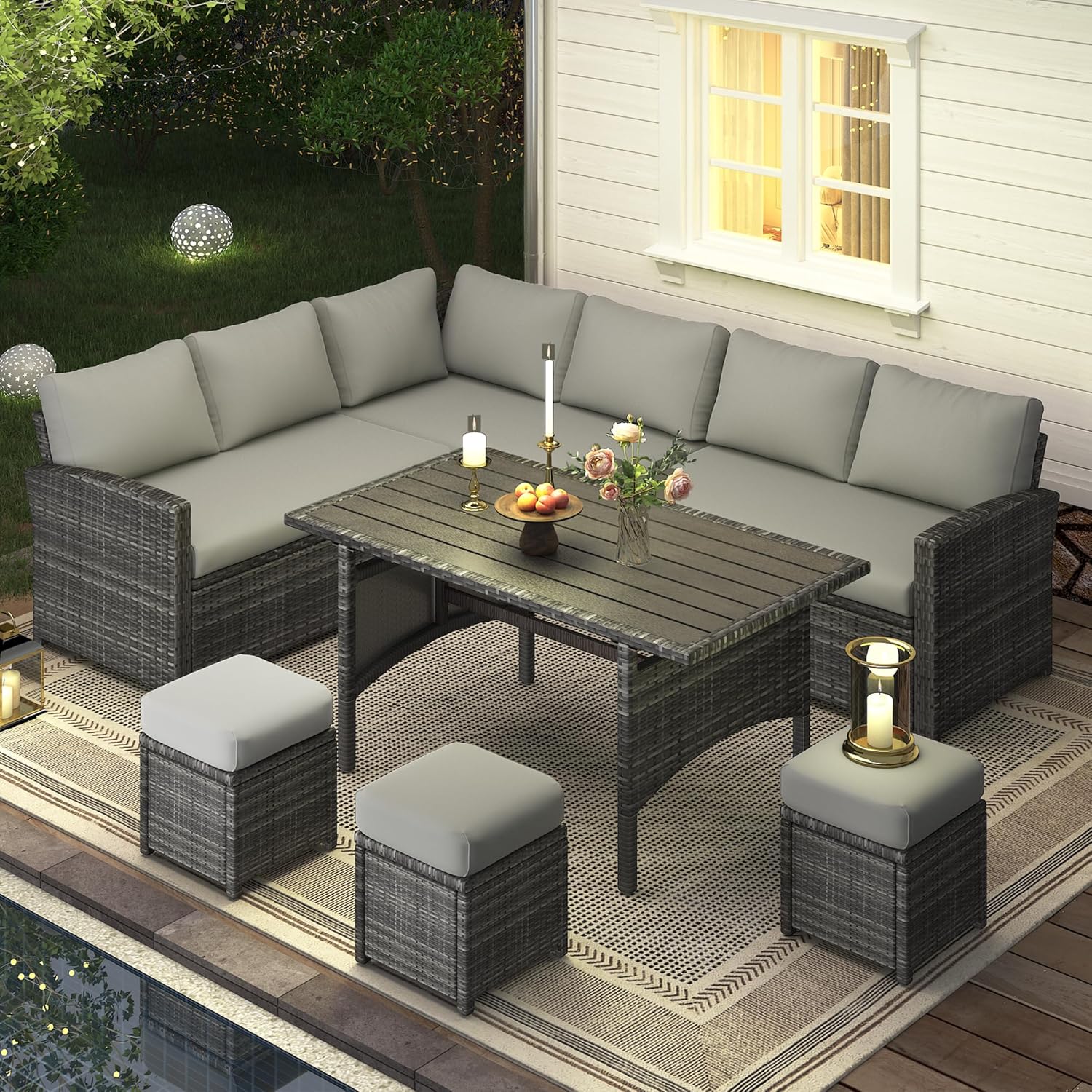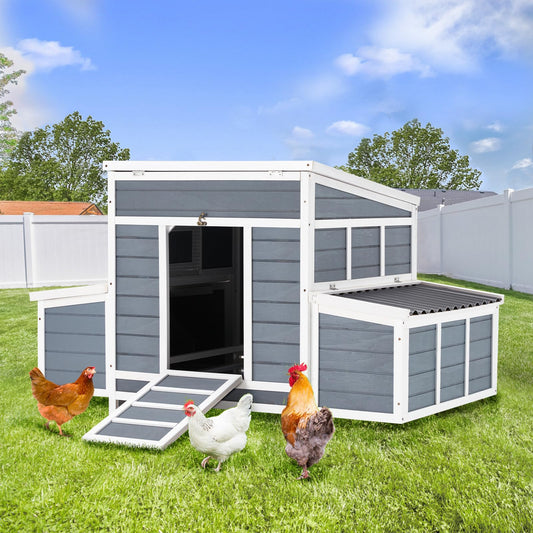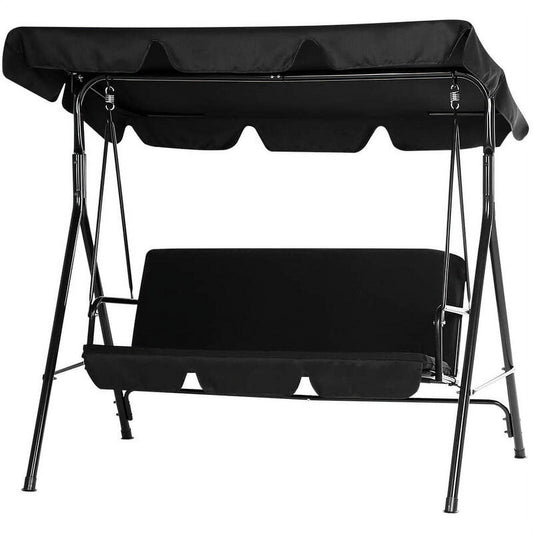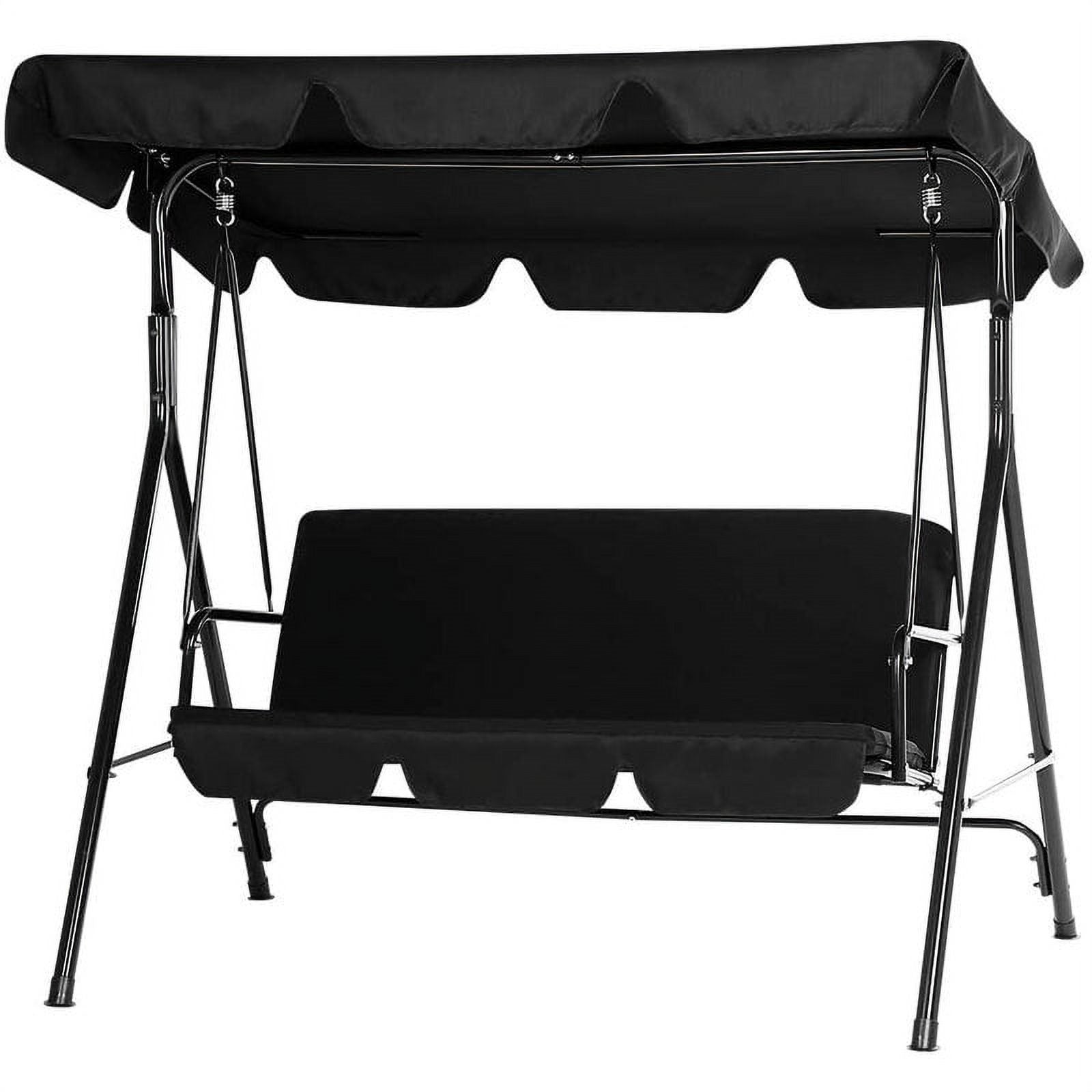Why Water Pooling on Gazebo Canopies Is a Problem
A gazebo is a great spot to relax outdoors, but nothing ruins it faster than water pooling on the roof. Whether you have a hard roof gazebo, a slanted roof gazebo, or a flat roof gazebo, standing water can turn your cozy space into a headache.
Water pooling might seem like a small issue, but it’s more serious than you think. For a flat roof gazebo, even a few inches of water can add extra weight, straining the frame over time. Over weeks or months, this can warp wood, bend metal, or even cause the roof to sag. And that’s not all—moisture seeps into seams, leading to mold and rot. Your gazebo’s lifespan could shrink by years if you ignore it.
Slanted roof gazebos aren’t safe either. If the slope isn’t steep enough, water can collect in low spots, especially after heavy rain. Hard roof gazebos with shingles or metal panels can develop leaks if water sits and eats away at the materials. Even a small pool can turn into a big problem when it freezes in winter, expanding and cracking the roof.
But don’t worry—preventing water pooling is easier than fixing the damage. This guide will walk you through simple steps to keep your gazebo dry, no matter what type of roof it has. Let’s start with the key things you need to know.
Key Takeaways
When it comes to stopping water from pooling on your gazebo roof, a few simple strategies go a long way. These key points will help you focus on what works, whether you’re dealing with a flat roof gazebo or a sloped one.
First, the right fabric makes a big difference. Choose water-resistant materials like marine-grade polyester or solution-dyed acrylic for your canopy. These fabrics repel water instead of soaking it up, which helps prevent sagging where water can collect. They’re tough enough to handle heavy rain, making them a smart pick for any gazebo.
Next, slope matters. Even a flat roof gazebo needs a little tilt—aim for at least a 1-inch drop for every 12 inches of roof length. This gentle slope guides water toward the edges, so it can’t pool in the middle. For a slanted roof gazebo, check that the slope is steady; no dips or flat spots allowed.
Tightening the canopy is another must. Loose fabric creates pockets where water sits. Make sure all attachments—like ropes, clips, or Velcro—are secure. If you notice sagging after rain, adjust them right away to prevent pooling from happening again.
Adding tools to guide water flow can help too. Gutters work well on hard roof gazebos, channeling water away from the structure. For canopies, drain strips along seams or angled flaps at the corners direct water off the roof instead of letting it collect. These small additions can make a huge difference in keeping your gazebo dry.
|
Strategy |
Best For |
How It Helps |
|
Water-resistant fabrics |
All gazebo types |
Repels water, reduces sagging |
|
Proper roof slope |
Flat and slanted roofs |
Guides water toward edges |
|
Tight canopy attachments |
Canopy-style gazebos |
Eliminates sagging pockets |
|
Gutters/drain strips |
Hard roofs and canopies |
Directs water away from the roof |
These key takeaways are the foundation of preventing water pooling. Now, let’s look at why pooling happens in the first place, so you can target the problem at its source.

Common Causes of Water Pooling on Gazebo Canopies
Understanding why water pools on your gazebo roof is the first step to fixing it. Let’s break down the most common culprits, whether you have a flat roof gazebo, slanted roof gazebo, or hard roof gazebo.
A big issue is poor roof slope. Flat roof gazebos are especially prone here—if there’s no slight tilt, rainwater has nowhere to go and sits in puddles. Even slanted roof gazebos can have problems if the slope is too gentle or there are dips in the frame. Over time, these low spots collect more and more water.
Loose or sagging canopies are another main cause. Canopy fabric stretches over time, or attachments like ropes and clips come loose. This creates saggy pockets where water gets trapped. It’s common in older gazebos, but even new ones can have this issue if not set up tightly.
Debris buildup is easy to overlook but harmful. Leaves, twigs, or even dirt can block water flow on any roof type. For example, in a hard roof gazebo, debris might clog the tiny gaps where water should drain. On a slanted roof gazebo, it can create dams that stop water from running off.
Low-quality or worn-out materials also play a role. Canopies made of thin, non-water-resistant fabric soak up water instead of repelling it, making them heavy and saggy. Hard roof gazebos with cracked shingles or rusted metal panels let water seep in and pool under the surface.
|
Cause |
Most Affected Gazebo Type |
How It Starts |
|
Poor slope |
Flat roof gazebo |
No tilt for water runoff |
|
Sagging canopy |
Canopy-style (all types) |
Loose attachments or stretched fabric |
|
Debris buildup |
All types, especially under trees |
Leaves/twigs blocking drainage paths |
|
Worn materials |
Hard roof gazebo (shingles/metal) |
Cracks or rust letting water collect |
Now that you know what’s causing the pooling, let’s move on to simple tips to stop it.
Useful Tips to Prevent Water Pooling
Preventing water pooling doesn’t have to be complicated. These easy, actionable tips work for any gazebo—flat roof, slanted roof, or hard roof—and will help keep water flowing away like it should.
First, check and adjust the roof slope. For a flat roof gazebo, add small supports under the frame to create a gentle tilt (aim for 1 inch of drop per 12 inches of roof length). This tiny slope makes a big difference in guiding water to the edges. For slanted roof gazebos, inspect for dips in the frame and straighten them out—even a small bump can cause pooling.
Keep your canopy tight. Check attachments like ropes, clips, or Velcro every few months. Tighten them up if they’re loose, and replace any that are worn out. If the fabric is stretched beyond repair, consider adding extra attachment points to pull it taut. A tight canopy leaves no room for water to collect.
Choose the right fabric from the start. When replacing a canopy, go for water-resistant materials like marine-grade polyester. These fabrics don’t soak up water, so they stay light and don’t sag as easily. They’re a smart upgrade for any gazebo, but especially flat roof ones where pooling is more likely.
Add drainage helpers. For hard roof gazebo, install small gutters along the edges to channel water away. On canopies, attach drain strips (sticky, flexible strips) along seams and corners—they direct water off the roof instead of letting it pool. Even angling side flaps upward a bit can guide water toward the edges.
Clear debris regularly. Make it a habit to sweep off your gazebo roof once a month, or more often if it’s under trees. Use a soft broom to avoid damaging the canopy or roof materials. This simple step keeps drainage paths open, whether you have a slanted roof gazebo or a flat one.
|
Tip |
Tools Needed |
How Often to Do It |
|
Adjust slope |
Small wooden blocks (for flat roofs) |
Once during setup, check yearly |
|
Tighten canopy |
Extra ropes/clips |
Every 3 months |
|
Upgrade fabric |
Water-resistant canopy |
When old fabric sags/wears |
|
Add drain strips |
Drain strips (adhesive) |
Once during setup, replace yearly |
|
Clear debris |
Soft broom |
Monthly (more if under trees) |
These tips are easy to put into action and will go a long way in keeping your gazebo dry. Also, I highly recommend YODOLLA's gazebo roofs, which are made of high-quality waterproof materials.Up next, we’ll dive into the best solutions for stopping pooling once it starts—some quick fixes and more permanent solutions.

Best Solutions to Stop Water Pooling on Gazebo Canopies
Now that you know the causes and prevention tips, let’s get into the best solutions to stop water from pooling on your gazebo roof. These methods work for any type—whether it’s a flat roof gazebo, slanted roof gazebo, or hard roof gazebo—and are easy to put into action.
One great solution is using pool noodles on the frame. Cut the noodles to fit along the roof’s edges or crossbars, then slide them over the frame. They gently lift the canopy fabric, creating a slope that guides water toward the edges. This is especially handy for flat roof gazebos, where even a small lift can make a big difference in runoff.
Attaching drain strips along corners and seams is another winner. These sticky, flexible strips catch water and direct it off the roof. For a slanted roof gazebo, place them along the lowest edges to catch any water that might pool there. They’re cheap, easy to install, and work on both fabric canopies and hard roof gazebos.
If your canopy is old or worn, securing a waterproof cover or tarp over it can help. Make sure it’s tight and tuck the edges under the original canopy to prevent wind from lifting it. This adds an extra layer of protection, especially during heavy rain, and is a quick fix for both flat and slanted roof gazebos.
Adding tent poles or corner supports is a great way to prevent sagging. Place them under the center or corners of the roof to lift the fabric. For a flat roof gazebo, this creates a natural slope, while for a slanted one, it reinforces the existing slope. You can adjust the height to get the perfect angle for water runoff.
Installing drain grommets at low points is a smart move for fabric canopies. These small holes let water escape before it has a chance to pool. Mark the lowest spots on your canopy (you’ll notice them after rain), then cut small holes and add the grommets. They’re easy to find at hardware stores and work wonders on flat roof gazebos.
Angling side flaps upward helps guide water toward the edges. Use clips or ties to pull the flaps up a few inches, creating a channel for water to flow. This is a simple trick that works on any gazebo with side flaps, whether it’s a slanted or flat roof model.
Finally, clearing debris regularly and improving airflow are key. Debris blocks water flow, so sweep the roof weekly if it’s under trees. Good airflow helps the roof dry faster, preventing mold and mildew. If your gazebo is enclosed, leave a side open during rain to let air circulate.
|
Solution |
Best For |
How Long It Lasts |
|
Pool noodles on frame |
Flat roof gazebo |
6 - 12 months (replace when worn) |
|
Drain strips |
All types |
1 - 2 years |
|
Waterproof cover |
Worn canopies |
6 - 12 months |
|
Tent poles/supports |
Sagging canopies |
As long as the poles are in place |
|
Drain grommets |
Fabric canopies |
Permanent (if installed correctly) |
These solutions are tried and tested—pick the ones that fit your gazebo type, and you’ll see a big difference in how much water pools. Now, let’s get creative with some homemade fixes!
Homemade & Creative Solutions
You don’t need fancy tools or expensive materials to stop water pooling—some of the best solutions are things you might already have at home. These homemade fixes are budget - friendly and work surprisingly well for any gazebo.
Pool noodles, PVC pipes, or dowels are perfect for raising fabric edges. Just like the store - bought version, these items can be placed along the frame to lift the canopy. For a flat roof gazebo, lay a PVC pipe along the center to create a peak, guiding water to both sides. Dowels work great for smaller areas, like corners, and pool noodles add a bit of cushioning that won’t damage the fabric.
Old vinyl, tablecloths, or shower curtains can be used as drip lines. Cut them into long strips and attach them along the edges of the roof with staples or clips. They act like drain strips, directing water away from the gazebo. This is a great way to repurpose old items and works on both slanted roof gazebos and flat ones.
Weighted corners with bricks or cinder blocks can prevent the canopy from sagging in the middle. Place a brick (wrapped in a cloth to avoid damaging the fabric) on each corner of the roof. The weight pulls the fabric tight, eliminating saggy pockets where water can collect. This is especially useful for flat roof gazebos on windy days when the canopy might lift.
Knots or mesh coverings over vulnerable seams add extra protection. If you notice water seeping through seams, tie small knots in the fabric to block the gaps, or glue a piece of mesh over the area. The mesh lets water escape but stops it from pooling. This is a quick fix for any fabric canopy, whether it’s on a slanted or flat roof gazebo.
Collecting runoff in containers is a clever way to deal with excess water, especially if you have a flat roof gazebo with no nearby drainage. Place buckets or large containers under the lowest edges of the roof. They’ll catch the water, which you can then use to water plants. It’s a win - win!
|
Homemade Fix |
What You’ll Need |
How to Use It |
|
Pool noodles/PVC |
Old pool noodles or PVC pipes |
Slide over frame to lift fabric |
|
Vinyl/shower curtain drip lines |
Old vinyl or shower curtains |
Cut into strips, attach to roof edges |
|
Weighted corners |
Bricks or cinder blocks, cloth |
Wrap bricks, place on canopy corners |
|
Knots/mesh over seams |
String or mesh fabric |
Tie knots in seams or glue mesh over gaps |
|
Runoff containers |
Buckets or large containers |
Place under roof edges to catch water |
These creative solutions prove that you don’t need to spend a lot to keep your gazebo dry. Plus, they’re easy to adjust or replace as needed. Up next, we’ll answer some common questions about managing water on gazebo canopies.

FAQs About Gazebo Canopy Water Management
After learning about causes, tips, and solutions for water pooling, you might still have some questions. Let’s answer the most common ones to make sure you’re fully prepared to keep your gazebo dry.
Q: How often should I check my gazebo roof for water pooling?
A: It’s a good idea to check after every heavy rain, especially if you have a flat roof gazebo. For slanted roof gazebos or hard roof gazebos, a monthly check should be enough. This way, you can catch small pools before they turn into big problems.
Q: Can I use a pressure washer to clean my gazebo roof?
A: It’s not recommended, especially for fabric canopies. The high pressure can damage the material or loosen attachments, leading to more sagging and pooling. Stick to a soft broom or a hose with a gentle spray. For hard roof gazebos, a soft brush works best to avoid scratching the surface.
Q: What’s the best way to add slope to a flat roof gazebo?
A: You can use wooden blocks or small metal supports under the roof frame. Place them under one side to create a slight tilt—remember, 1 inch of drop for every 12 inches of roof length is ideal. This gentle slope will guide water to the edges without making the roof look uneven.
Q: How do I know if my gazebo roof frame is strong enough to handle water pooling?
A: If you notice the frame bending, creaking, or sagging under the weight of water, it’s not strong enough. For a flat roof gazebo, this is a bigger risk. Reinforce the frame with extra beams or supports to distribute the weight. For hard roof gazebos, check for rust or rot in the frame—these weaken the structure over time.
Q: Are there any gazebo roof ideas that naturally prevent water pooling?
A: Yes! Choosing a slanted roof gazebo over a flat one is a great start, as the slope helps water run off. For hard roof gazebos, opt for materials like metal that have a smooth surface, making it harder for water to pool. You can also add decorative gutters that blend with the design while directing water away.
|
FAQ Question |
Quick Answer |
|
How often to check for pooling? |
After heavy rain (flat roof); monthly (slanted/hard roof) |
|
Can I use a pressure washer? |
No—use a soft broom or gentle hose spray |
|
Best way to add slope to flat roof? |
Use wooden blocks/supports for a 1:12 tilt |
|
How to check frame strength? |
Look for bending, creaking, or sagging |
|
Gazebo roof ideas to prevent pooling? |
Slanted design, metal materials, decorative gutters |
These answers should help you handle any issues that come up. Now, let’s wrap things up with a quick recap.
Conclusion: Keep Your Gazebo Dry and Long-Lasting
Preventing water pooling on your gazebo roof isn’t just about avoiding leaks—it’s about keeping your outdoor space functional and long - lasting. Whether you have a flat roof gazebo, slanted roof gazebo, or hard roof gazebo, the steps are simple: understand the causes, take preventive measures, and use the right solutions when needed.
Remember, a little effort goes a long way. Checking your roof regularly, keeping it clean, and making sure the slope is right can save you from costly repairs later. Even small fixes, like using pool noodles to lift fabric or adding drain strips, can make a big difference in how well your gazebo handles rain.
Don’t let water pooling ruin your gazebo experience. With the tips and solutions in this guide, you can keep your roof dry and enjoy your outdoor space for years to come. Whether you’re hosting a gathering or just relaxing alone, a dry gazebo is a happy gazebo.




